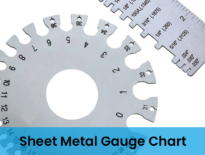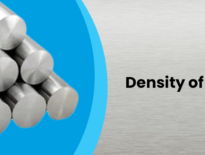Mild Steel, also known as Carbon Steel, refers to low carbon steel that lacks any alloying elements and has a carbon content of up to 0.25%. The term “Mild” encompasses a broad range of steel specifications and forms used in various applications.
Mild Steel is commonly used in mechanical engineering for components that do not experience high levels of stress. When it undergoes bright cold drawing, the steel can withstand higher stress, especially in smaller diameters.
Bright Mild Steel offers several advantages over standard mild steel, including tighter sectional tolerances, better straightness, and a cleaner surface finish. Cold drawing allows the steel to be closer to the final machining size, which helps reduce machining costs. Additionally, bright steel bars have significantly higher physical strength compared to hot rolled bars of the same size.
EN8, also known as unalloyed medium carbon steel (BS 970 080M40), has higher strength levels than typical bright mild steel due to thermo-mechanical rolling. EN8 is versatile and well-suited for various engineering purposes where greater strength is required.
What is EN 8 Carbon Steel?
EN8 carbon steel is a medium carbon and medium tensile strength steel known for its improved strength over mild steel. It is often chosen for applications that need better durability and can be through-hardened, making it suitable for parts that undergo wear and tear. EN8 is also appreciated for its good machinability in various conditions, making it versatile for different engineering uses.
While EN8 steel is typically used in its untreated state, it can be surface-hardened through induction processes, enhancing its wear resistance. Heat treatment of EN8 steel leads to consistent machining properties due to its uniform metallurgical structure. For sections larger than 65mm, good results can still be achieved with heat treatment, though mechanical properties may slightly diminish towards the center of the material. Therefore, larger sizes are often supplied untreated, with heat treatment performed after initial stock removal to achieve better properties near the core.
Classified under the British standard BS970 as 080M40, EN8 is also known globally by names like C45 in the EU, 1040 steel in the USA, and S40C in Japan. It is widely used in engineering and construction due to its reliable structural strength. Compared to bright mild steel, EN8 offers superior tensile strength, making it a cost-effective choice for applications that demand more robust performance without compromising on quality.
EN8 Steel is Steel Grade Specification
| EN8 Steel | Details |
| Standard | BS 970-1955 |
| Steel Grade | EN8 |
| Purpose | Wrought steel for mechanical and allied engineering applications |
| Other Common Grades in BS 970-1955 | EN9, EN19, EN24, EN36 |
| Equivalent Grade in BS 970-1991 | 080M40 steel |
This table provides a concise summary of EN8 steel as specified in the BS 970-1955 standard and its equivalent in the BS 970-1991 standard.
Chemical Composition of EN8 Steel
| Element | Content (%) |
|---|---|
| C | 0.36-0.44 |
| Mn | 0.60-1.00 |
| Si | 0.05-0.35 |
| P | 0.015-0.06 |
| S | 0.015-0.06 |
EN8 Steel Mechanical Properties
| Heat Treatment | Tensile Strength Rm | Yield Strength Rm |
Rp 0.2 | A min on | Impact | Hardness | |
|---|---|---|---|---|---|---|---|
| 5.65√So | Izod Ft.lb | KCV J | |||||
| MPa | MPa | MPa | HB | ||||
| N | 550 | 280 | – | 16 | 15 | 16 | 152/207 |
| 510 | 245 | – | 17 | – | – | 146/197 | |
| Q | 625/775 | 385 | 355 | 16 | 25 | 28 | 179/229 |
| R | 700/850 | 465 | 450 | 16 | 25 | 28 | 201/255 |
Welding En8 steel
Welding EN8 steel has become easier with modern EN8 bright mild steel due to its lower carbon content. For sections up to 18 mm thick, you can weld without preheating using MIG wire (SG2) or a 7018 electrode.
For sections thicker than 18 mm, it’s recommended to preheat the steel to 100°C (212°F) to prevent the risk of cracking during the welding process.
EN8 Carbon Steel Equivalents Grade
Here are the equivalents of EN8 carbon steel grade in various standards:
BS 970-1991: 080M40
AISI/ASTM A29: 1038, 1040, 1045
DIN Werkstoff No.: 1.0511, 1.1186, 1.1189
BS & DIN European: C40, CK40, C45, CK45
JIS G4051: S40C, S45C
Heat Treatment of EN8 Carbon Steel
EN8 steel is generally supplied untreated but can be ordered in normalized or heat-treated conditions for specific applications.
- Tempering: EN8 carbon steel (080M40) is tempered at temperatures between 550°C to 660°C (1022°F to 1220°F). The process involves heating for approximately 1 hour per inch of thickness, followed by cooling in oil or water.
- Normalizing: EN8 bright mild steel is normalized at temperatures of 830°C to 860°C (1526°F to 1580°F). After heating, the steel is cooled in air.
- Quenching: To harden EN8 steel, it is heated to the specified temperature and then quenched in oil or water.
EN8 Carbon Steel Density
The density of EN8 carbon steel is approximately 7.8 g/cm³. This high density contributes to its strength and durability, making it suitable for various engineering applications.
Thermal Conductivity
EN8 carbon steel has good thermal conductivity, which allows it to transfer heat effectively. This property can be advantageous in applications where heat dissipation is needed but may also pose challenges in situations where thermal insulation is important.
Applications of EN8 Carbon Steel
EN8 carbon steel is a versatile material used in various general engineering applications that demand higher strength than mild steel. Typical uses include:
- General-purpose axles
- Shafts
- Gears
- Bolts and studs
- Spindles
- Automotive components
- Various general engineering parts
We supply EN8 carbon steel to clients in regions including the UAE, Europe (such as the UK), and Africa (like South Africa). We also offer promotions on EN8 carbon steel at the end of most months. For detailed pricing and inquiries, please send us an email with your requirements.
Manufacturing EN8 Carbon Steel
EN8 carbon steel is produced using two main methods, each offering distinct advantages:
- Hot Rolled Process
- Description: In this method, the steel is heated to a high temperature and then passed through rollers to shape it into bars, rods, or other forms.
- Advantages: This process is efficient for producing large quantities of material.
- Considerations: It may result in less precise dimensions and surface finishes compared to other methods.
- Cold Finished Process
- Description: After hot rolling, the steel undergoes further processing at room temperature. Techniques like drawing, grinding, or turning are used to refine the steel’s size and surface finish.
- Advantages: This process allows for tighter tolerances and smoother surfaces, making it ideal for applications requiring high precision.
Each method provides different benefits depending on the application and required specifications.
Summary of EN8 Carbon Steel
EN8 is a medium carbon steel that offers a good balance of tensile strength and machinability. It’s often used in its cold-drawn or as-rolled forms and can be hardened through flame or induction processes for improved surface hardness. This steel is commonly applied in making axles, shafts, gears, and bolts.
To heat-treat EN8, heat it to between 820-860°C and then quench in oil or water. Following quenching, tempering at 550-660°C helps reduce brittleness. EN8 has a density of 7800 kg/m³ and provides good machinability and welding properties. For welding, pieces up to 18mm thick can be joined without preheating, but thicker sections need preheating to prevent cracking. Normalizing and annealing are used to achieve desired properties and relieve internal stresses.
EN8 is recognized internationally and has equivalents in various standards, including BS 970-1991 (080M40) and AISI/ASTM A29 (1038, 1040, 1045), making it a versatile and widely used material in the steel industry.
FAQs
Is EN8 better than mild steel?
EN8 is generally considered superior to mild steel for applications requiring higher tensile strength and hardness. It is particularly suitable for components like axles, gears, and shafts where enhanced mechanical properties are necessary.
What is EN8 material?
EN8 is an unalloyed medium carbon steel used in situations where better properties than mild steel are needed, but where the cost of alloy steel is not justified. It can be heat treated, through methods like flame or induction hardening, to achieve good surface hardness and moderate wear resistance.
What type of material is EN8?
EN8 is an unalloyed medium carbon steel. It is used in applications where improved properties over mild steel are needed without the cost of alloy steels. EN8 can be heat treated to achieve good surface hardness and moderate wear resistance through processes like flame or induction hardening.


